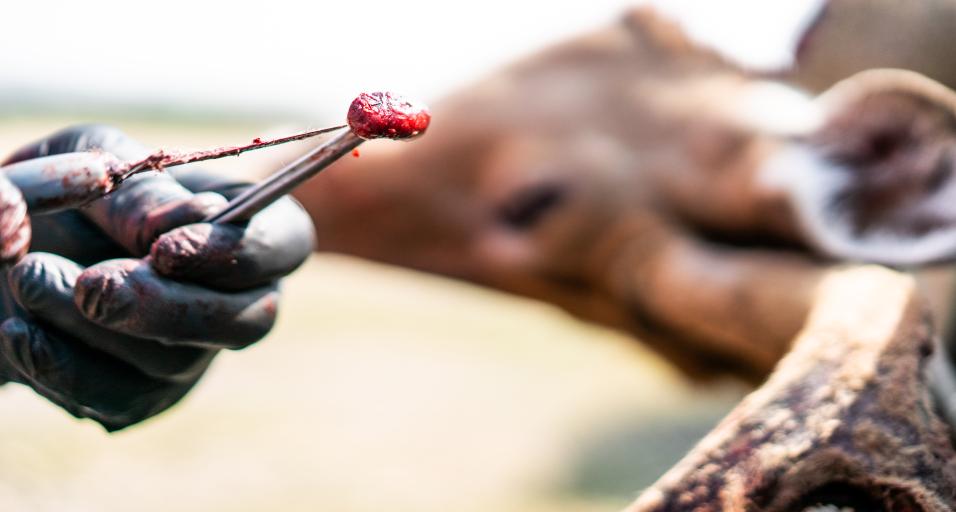LARAMIE — The Wyoming Game and Fish Department’s Wildlife Health Laboratory tested 5,276 samples from big game animals for chronic wasting disease in 2024. Testing was completed earlier this year and samples were submitted from throughout the state. CWD was detected in 726 of those samples submitted.
Jessica Jennings, Game and Fish wildlife disease specialist, said samples were submitted from hunter-harvest, road-killed animals and animals found dead or that were euthanized.
CWD is a chronic, fatal disease of the central nervous system in mule deer, white-tailed deer, elk and moose. It belongs to the group of rare diseases called transmissible spongiform encephalopathies. These disorders are caused by abnormally folded proteins called prions. Early in the disease animals don’t show any clinical signs. Later on, affected animals show progressive weight loss, reluctance to move, excessive salivation, droopy ears, increased drinking and urination, lethargy and eventually death.
The number of samples submitted and tested in 2024 increased slightly from previous years. In 2023, 5,100 samples were submitted, a decline compared to 2022, when 5,875 samples were submitted. The percentage of samples that tested positive in 2024 was 13.8%, which remained similar to 2023, when 13.9% of samples tested positive. The proportion of positive samples in 2024 was slightly higher than in 2022, in which 12.3% of samples tested were positive.
However, Jennings said comparing the number of positive tests each year can be misleading because Game and Fish’s CWD surveillance program focuses on different deer and elk herd units each year. Additionally, the number of positives is proportional to the prevalence of CWD in the particular herd unit surveyed.
“We can say that the prevalence of CWD is slowly increasing in many deer and elk herd units in the state,” Jennings said. “In 2024, CWD was detected in three new deer hunt areas, three new elk hunt areas and for the first time on an elk feedground.”
Jennings said the lab, which consists of four permanent employees and three contract employees, spent the majority of the hunting season conducting CWD testing with peak testing occurring in October and November. That doesn’t include surveillance preparation, data entry and writing reports once the testing season is over.
The majority of the test samples this year were collected by Game and Fish field personnel at hunter check stations or through regional offices.
“Chronic wasting disease is a major concern for Game and Fish and we thank hunters who contributed samples from their deer, elk and moose,” Jennings said. “These samples are instrumental in helping us better understand the prevalence and distribution of this disease in our state.”
For more info on CWD, please visit the Game and Fish website.
— WGFD —

